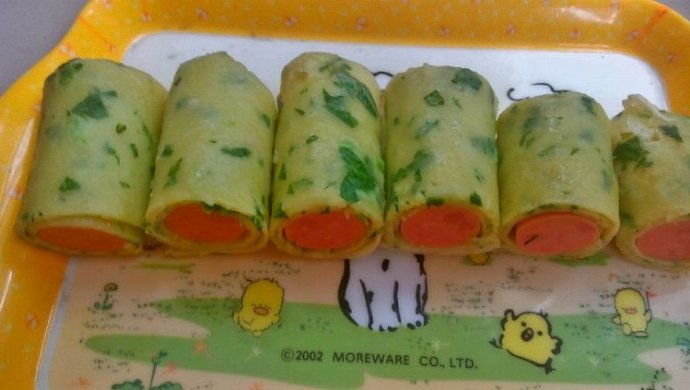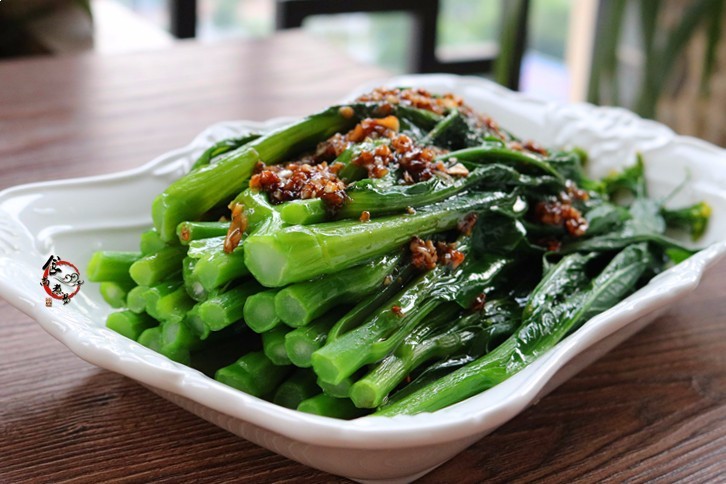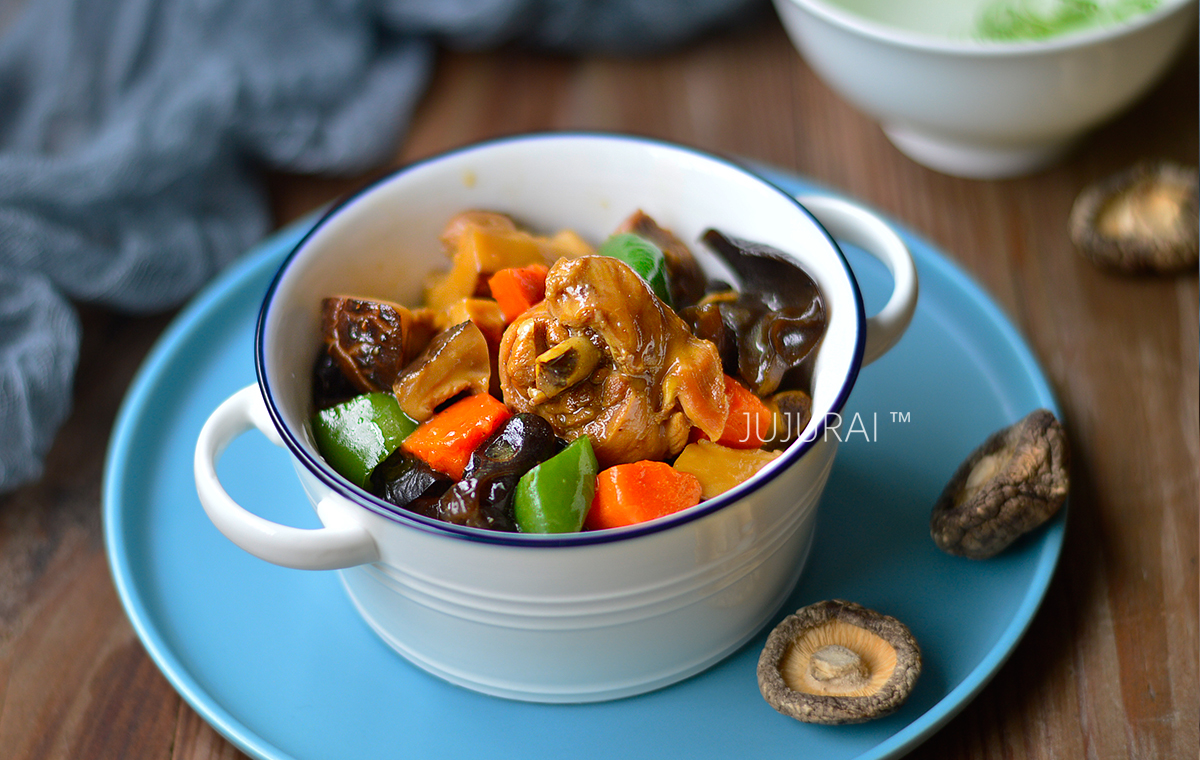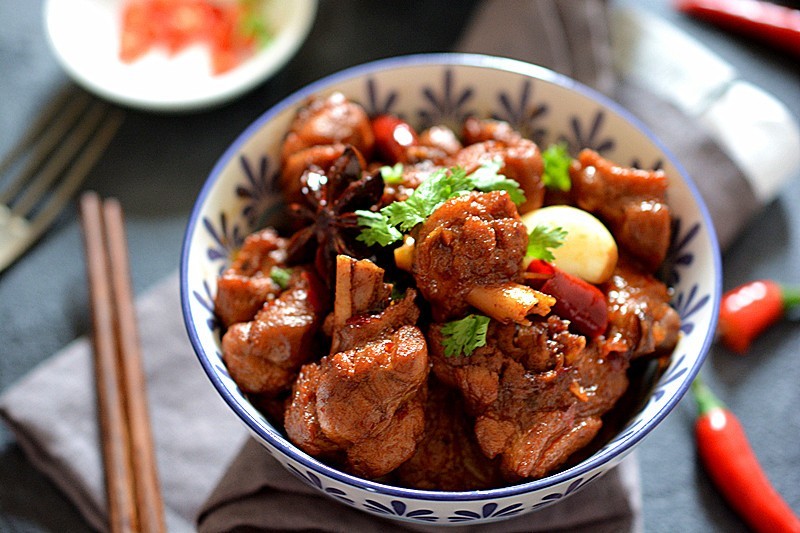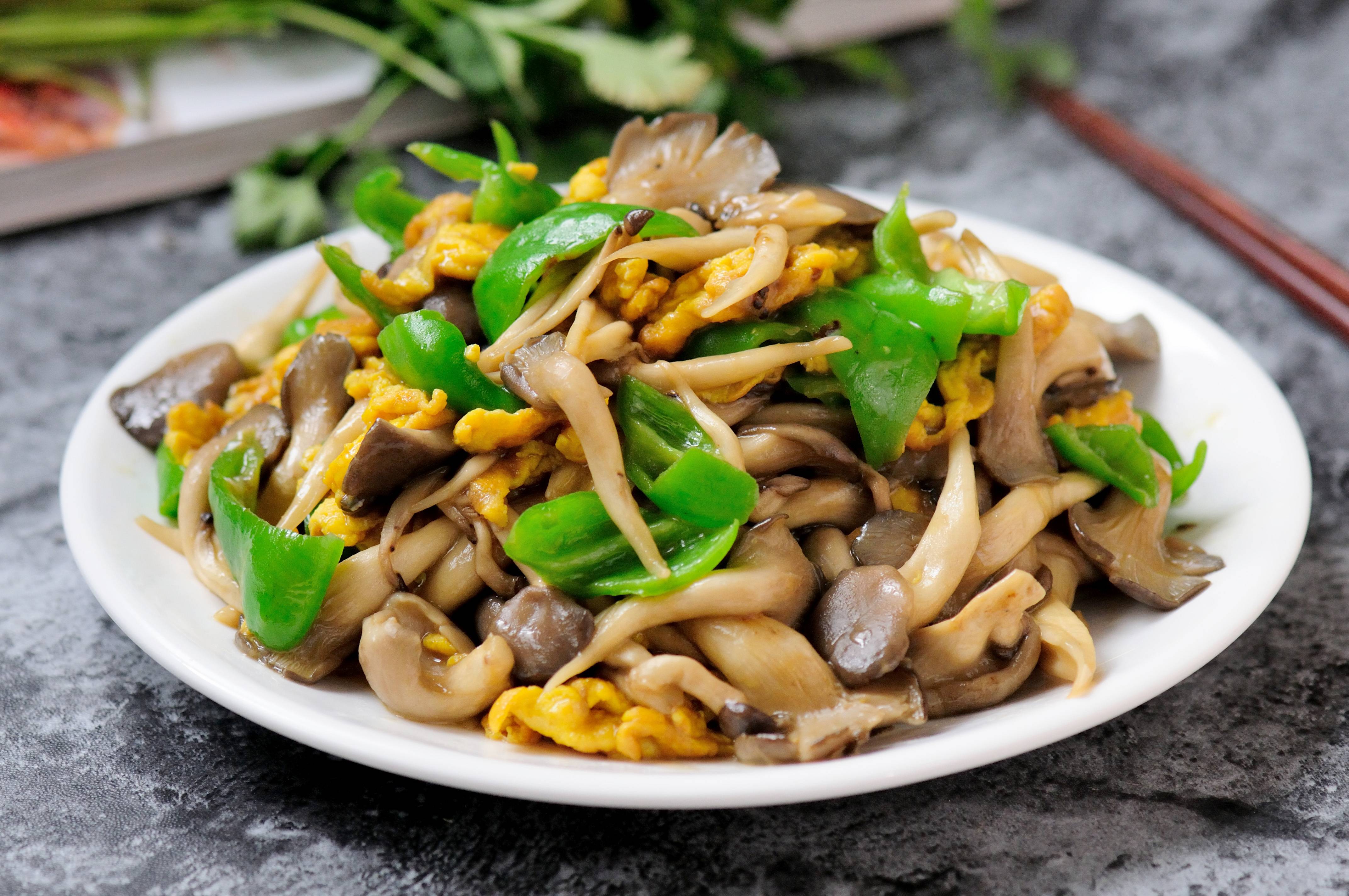dry cheese bread
| (old noodles) high-gluten flour 100g | (老面)水 60g |
| (Old Noodles) Yeast 2g | (main dough) high-gluten flour 150g |
| (main dough) low-gluten flour 50g | (main dough) water 40g |
| (Main dough) Whipping cream 50g | (main dough) butter 20g |
| (main dough) sugar 30g | (main dough) eggs 1 |
| (main dough) yeast 2g | (Main Dough) Salt 2g |
| (filling, coating) cream cheese 150g | (filling, coating) milk 30g |
| (filling, coating) sugar 30g | (surface) milk powder 50g |
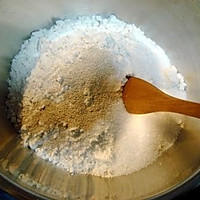
Step 1
Mix all the ingredients for the old noodles and let them ferment (ferment at room temperature of 25 degrees for more than 6 hours, or after resting at room temperature for 1 hour, seal and refrigerated for more than 12 hours). The fermented dough should be 2-3 times its original volume. Note: Many people reported that the fermentation did not rise after being refrigerated for 12 hours... Please "let it stand at room temperature for a while before refrigeration"hours”! so that the yeast is awakened.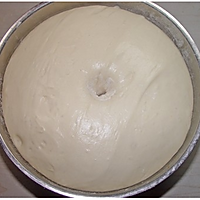
Step 2
Tear the old dough into small pieces, mix it with the main dough ingredients except butter and light cream, knead slightly and then add butter and light cream until a glove film is formed. Put it into a container for primary fermentation until the dough doubles in size, and it is better to poke holes without rebounding. Note: A. The 40g of water in the main dough is for reference only. Since each flour has different water absorption, please adjust the amount of water flexibly! The end result is to ensure that the dough is as soft as an 'earlobe'. Specific operation method reference: first add 20g of the 40g of water in the main dough formula. After adding the light cream and butter, check the dough effect. If the dough is still hard, add some water. If it is not hard, stop here. B. Also add 2g of yeast to the main dough. This is because the old dough is not fermented enough, so we add more ingredients to shorten the fermentation time.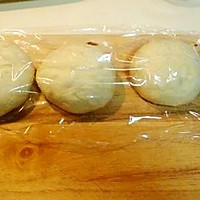
Step 3
Dough venting and dividingForm 2 loaves into balls and roll them into round balls, then let them rest for a second fermentation until they double in size. Note: The recipe makes one 8-inch loaf or two 6-inch loaves.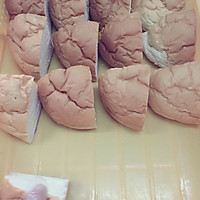
Step 4
Put the bread base into the preheated oven, with the middle and lower layers heated to 185 degrees for 25 minutes (for reference only! Please adjust according to the temperament of your own oven). After cooling slightly, cut into a cross shape from the middle (divided into four). The crust of the freshly baked bread will be a little hard, and it will soften after being sealed in a plastic bag for a while. Note: The solution to cracked dough and overall hard bread—— A. The middle and lower layers are baked at a lower temperature. B. Brush the surface of the dough with butter/egg liquid/milk/flour water, etc., or cover it with tin foil halfway through baking.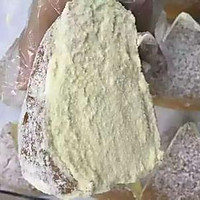
Step 5
Beat the cream cheese in the filling (do not melt it, work directly) with a whisk until smooth, then add sugar and milk and mix evenly (no needsend). Take 1/4 piece of bread, cut it crosswise and fill it with cheese filling. Then take some cheese filling and spread it on the cut surface of the bread, and sprinkle a lot of milk powder to make the cut surface turn white.
Step 6
The cheese buns are full of ingredients and ready to go! Note: If the bread is not finished, it needs to be kept refrigerated to prevent the cream cheese filling from melting at room temperature.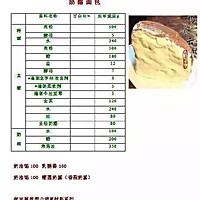
Step 7
The last picture is the internal recipe of a certain bakery, which also uses medium fermentation. You can refer to it. Attached is the direct fermentation method: Mix all the ingredients of the main dough and old dough and knead them evenly - ferment for one time - shape, deflate, and bake for the second time. Cheese bread recipesThe following is a lengthy article written by me, mainly about bread making skills. If you don’t like it, feel free to skip it~~
1. The filling is made of cream cheese (available on a certain store), not flaky cheese or brushed cheese. There is no limit to the brand of cream cheese, and the taste is actually pretty much the same.
Others like mascarpone cheese, which can also be used as a bread filling - for home baking, just follow your own preferences.
In addition, authentic cheese buns are filled with fillings after the bread is baked, instead of wrapping the fillings in raw embryos.
2. The recipe uses old fermented noodles.
Fermentation of old noodles is what the Japanese call "Chinese fermentation". That is, part of the flour, yeast and water are mixed and fully fermented as a "leave starter" (noodle starter), and then mixed with the main dough ingredients before fermentation.
Because the old dough is fermented first, the yeast activity in it reaches the maximum level, and natural bacteria (lactobacilli, acetic acid bacteria, etc.) are absorbed during the fermentation process. The finished bread has a more mellow taste and a more delicate and soft texture.
There are two methods for fermenting old noodles, the normal temperature method and the refrigerated method——
The normal temperature method is suitable for conditions above 25 degrees. The method is to mix the old noodle ingredients and ferment at room temperature for 6 hours (even shorter in midsummer).
The refrigeration method is suitable for conditions below 25 degrees, or when the old noodles will not be used immediately. The method is to mix the ingredients and let them sit for about 1 hour and then put them in the refrigerator to refrigerate (fermentation lasts for more than 12 hours, but not more than 72 hours), and then you can take them out when needed.
The fermented old noodles should have a honeycomb structure, expand to twice their size, and smell slightly sour.
It is worth noting that due to the fermentation of old noodles mixed with mixed bacteria, although the taste is richer, the fermentation is prone to sourness. Therefore, when old people in the north make Chinese-style noodles (steamed buns and buns), they like to rub a little alkali (baking soda) into the noodles to neutralize the sour taste. Western-style pastries are generally not used.
Someone asked whether high-gluten flour, medium-gluten flour or low-gluten flour should be used as the raw material for fermentation of old noodles?
I have even seen ones that use whole wheat flour and corn flour as raw materials.
In fact, fermentation uses a chemical reaction between yeast and starch. The above raw materials all contain starch and can theoretically be used to make old noodles.
So the specific material selection depends on what finished product you want to make——
Use whole wheat for whole wheat bread, use multigrain for multigrain steamed buns, and use medium gluten for steamed buns.
Usually I use high-gluten flour to make fermented bread.
You can still save old noodles if you don’t use them up. There are three ways to save them——
Refrigeration method, that is, place it in the refrigerator and store it for about 3 days.
The freezing method is to place it in the freezer of the refrigerator and defrost it when used. It can be stored for about 1 month.
The drying method is to break the old noodles into small pieces and dry them, then add water to soak them into the old noodle batter (then use the batter to knead the noodles), which can be stored for about 1 month.
Now that we have talked about the fermentation of Zhongzhong (old noodles), let’s talk about what Tangzhong/Banzhong is.
Tangzhong/scalping comes from Japanese, where "soup" means boiling water and "kind" means ingredients. Simply put, it means toAdd a small amount of flour to water and boil to gelatinize the starch in the flour, then add this part of the soup to the main dough.
Since starch gelatinization increases the water absorption of the dough, the finished bread has a soft and elastic texture, which can delay aging. The disadvantage is that the dough is sticky, not chewy, and has poor drawing effect.
Commercially available peach and plum cooked bread uses this method.
3. Several key points to keep the finished bread soft:
A. The ratio of high-gluten and low-gluten flour.
The higher the gluten content, the more "stringy" the bread will be, but the harder the finished product will be.
In fact, not all bread uses 100% high-gluten flour.
In order to ensure the taste of bread, a certain amount of low-gluten flour is generally used to neutralize it.
B. The degree of fermentation of the dough.
The primary fermentation and secondary fermentation must be in place, and the volume of the dough should double before entering the oven.
C. Dough moisture content.
The bread dough should be approximately the size of an earlobe (softer than dumpling noodles), otherwise the finished product will taste hard.
Here is a "water bath method"——
First, place the bread base in a mold (for large ones, put a chiffon cake mold, and for small dinner buns, put a hamburger mold), place it in a baking pan, and then add an appropriate amount of water to the baking pan (not too much, just fill the bottom of the pan). Then bake in the oven.
Because the water vapor in the baking pan is heated and evaporated, similar to the principle of steaming steamed buns, the baked bread will be much softer.
However, the water bath method is mostly used in making chiffon cakes, and the amount of water should be reduced when using bread to prevent the bread from becoming sticky.
D. Water temperature for kneading noodles.
Whether it is kneaded in a bread machine, a chef's machine, or kneaded by hand, the friction of the dough will always generate heat, and heat is not conducive to the dough's film formation and reduces the softness of the bread.
Therefore, it is best to use ice water for kneading the dough (the water temperature is 5 to 7 degrees), and the finished dough is best to be kept at 20 to 30 degrees.
E. Oven temperature.
When baking, the bread embryo needs to be placed in the middle and lower layers of the oven at a slightly lower temperature. Too high a temperature can easily make the bread crispy and hard on the outside and undercooked on the inside.
F. Dough size.
The bigger the dough, the harder it is to cook the inside. Often the outside will be hard but the inside will still be sticky (not baked through).
After all, household ovens are not as large as commercial ovens and heat evenly, so it is recommended to change the 1 large dough in the original recipe to 2 small doughs to make it easier to operate.
G. Dough fat content.
The more fat, the tastier the bread. Butter, light cream, cheese, vegetable oil, milk powder, milk, and egg yolks are all weapons to enhance the taste. But you still have to stop it in moderation and be careful about getting fat.
H. Use old noodle fermentation instead of direct fermentation (see point 2).
I. Use the soup method (see point 2).
In fact, the method used by bakeries on the street to make bread soft is very simple: add! add! Flour improver!
I have also bought Angel's improver, and it is really powerful. Steamed buns and bread are easy to ferment, and the finished products are fluffy and soft.
However, although Angel claims that it is non-toxic and harmless, she still feels uneasy.
When we bake in private, we would rather be more cumbersome and consider our health~~
4. Some children asked if the surface of this bread does not need to be brushed?
Personally, I'm quite lazy, so I just baked a big dinner bag without doing anything else.So, by the way, let’s popularize the science on the effect and taste difference of brushing different liquids on the surface of bread——
Milk: matte light brown soft leather;
Whole egg liquid: golden red bright skin, slightly chewy;
Egg yolk + water: golden yellow, bright skin, slightly chewy;
Melted butter: Generally brush the butter meal bag with a lot of sugar, the fragrance is slightly brighter and the skin is yellowish and soft;
Olive oil: generally used to brush whole wheat and corn bread, olive flavor brown and bright soft crust;
Thin batter: Generally used in borscht bread, it has a weak gloss and a crispy skin.

